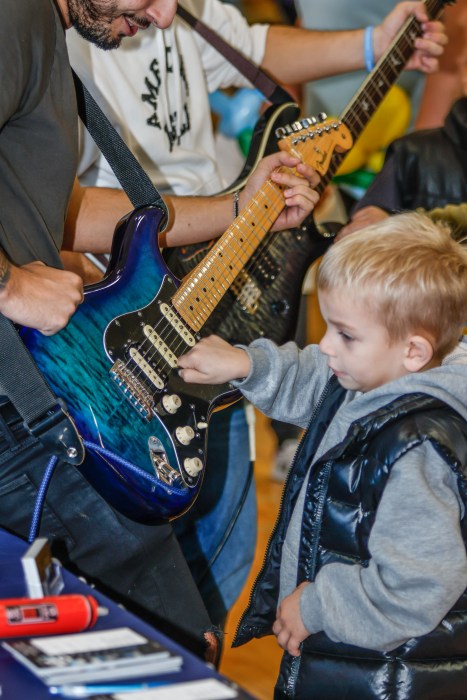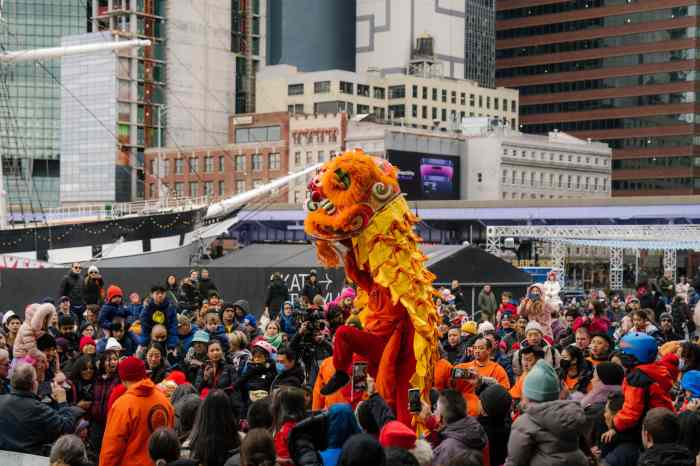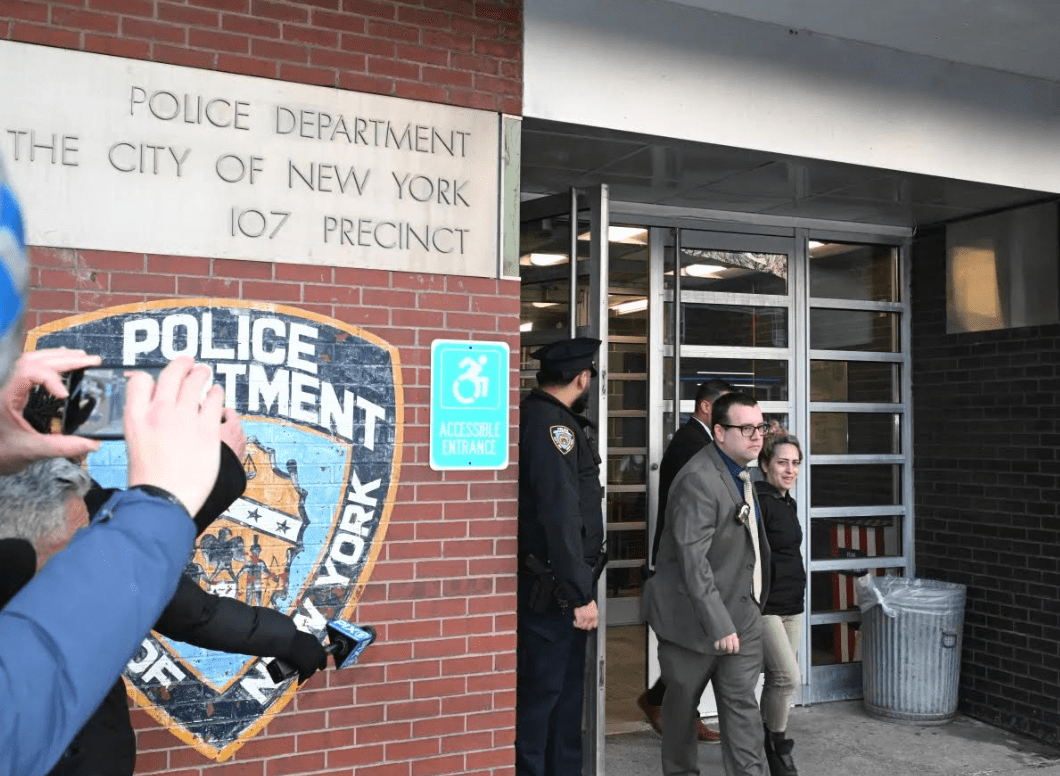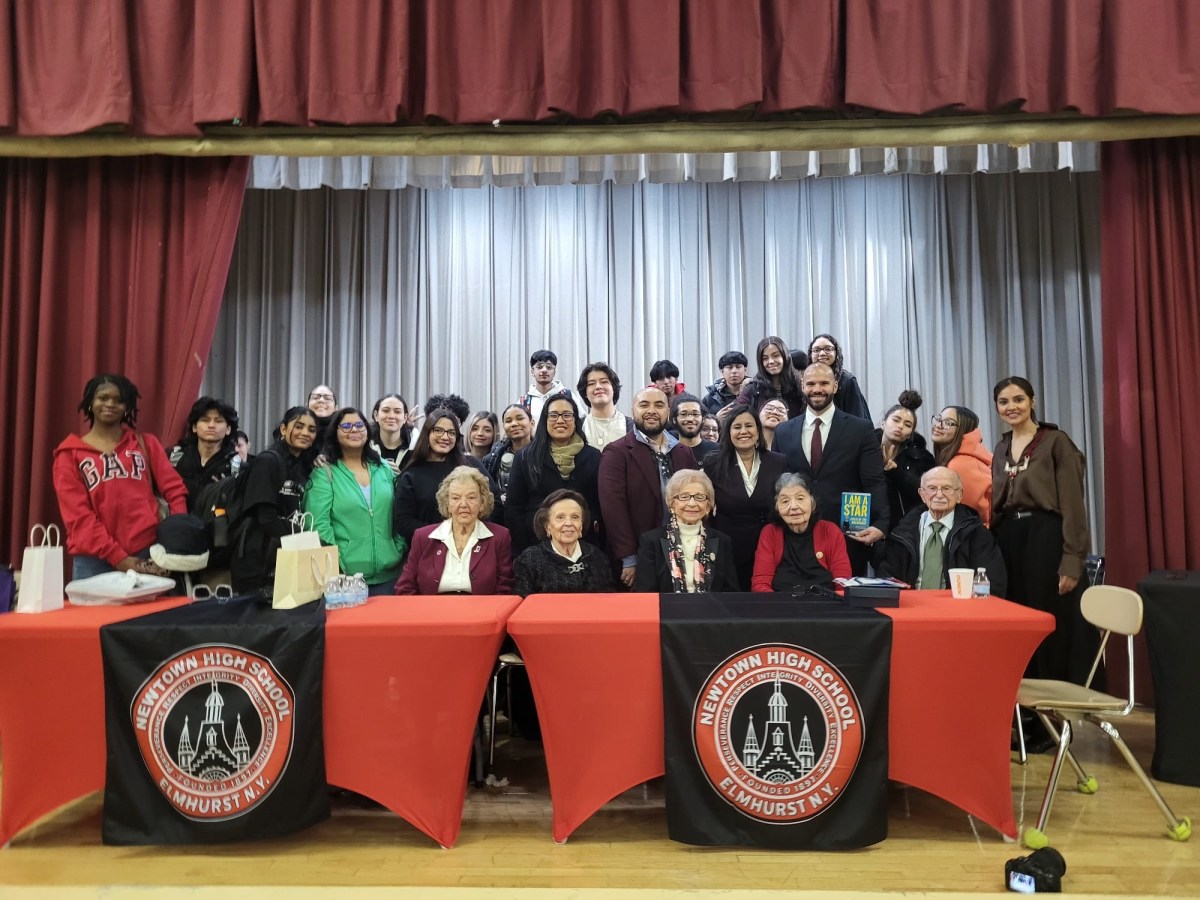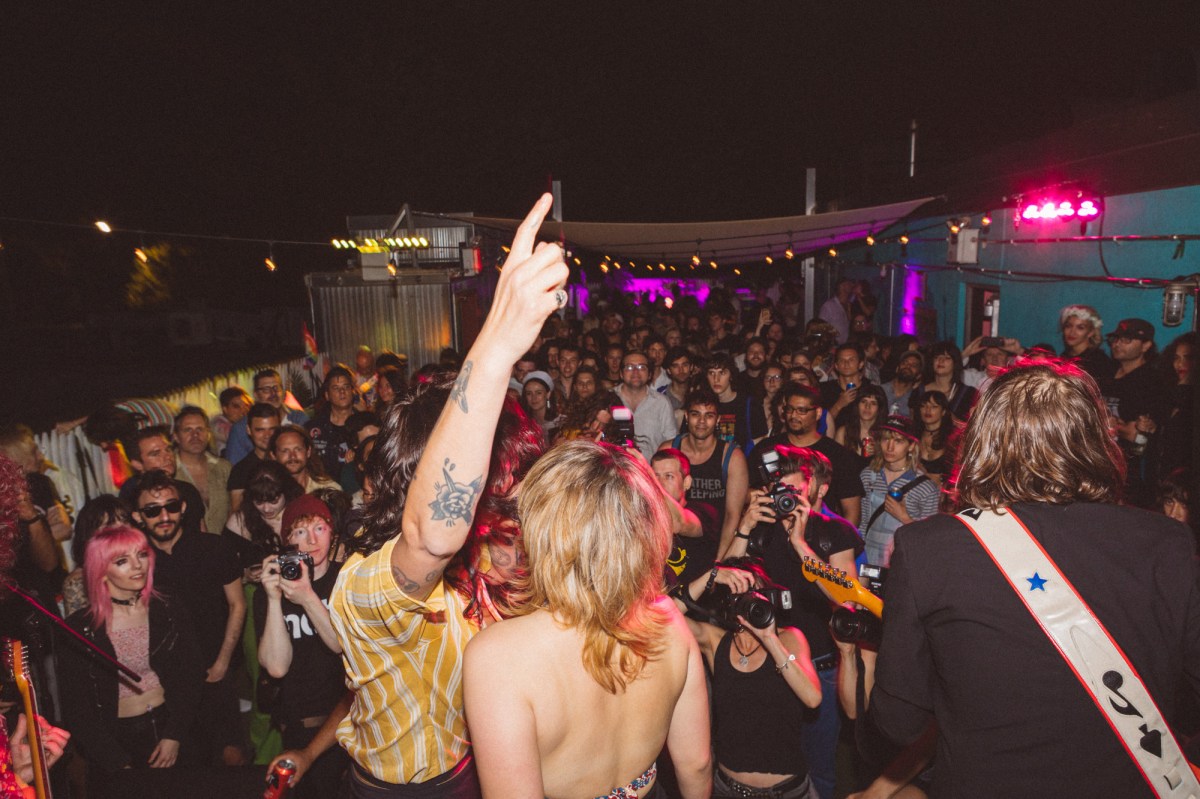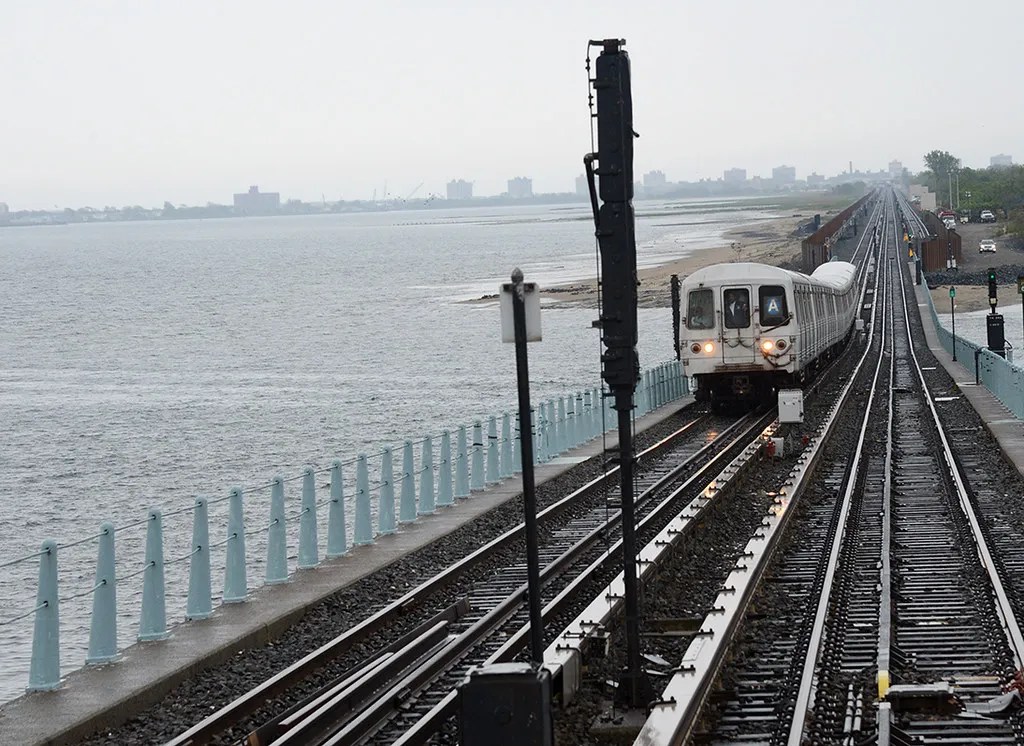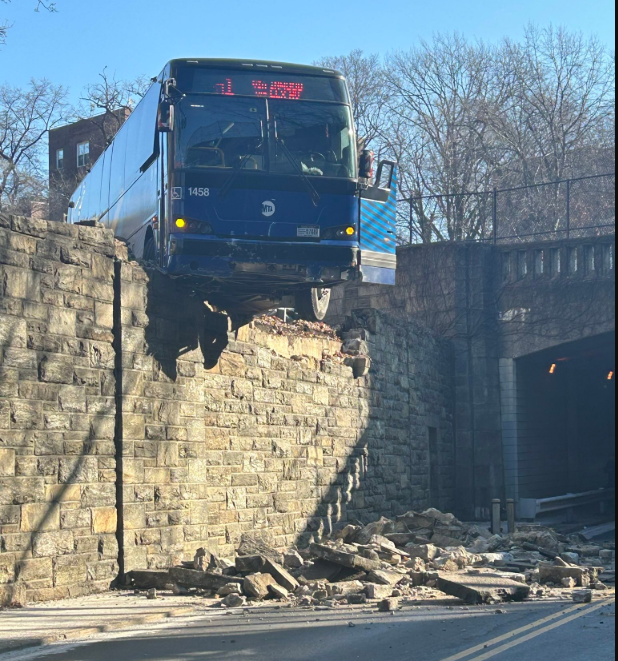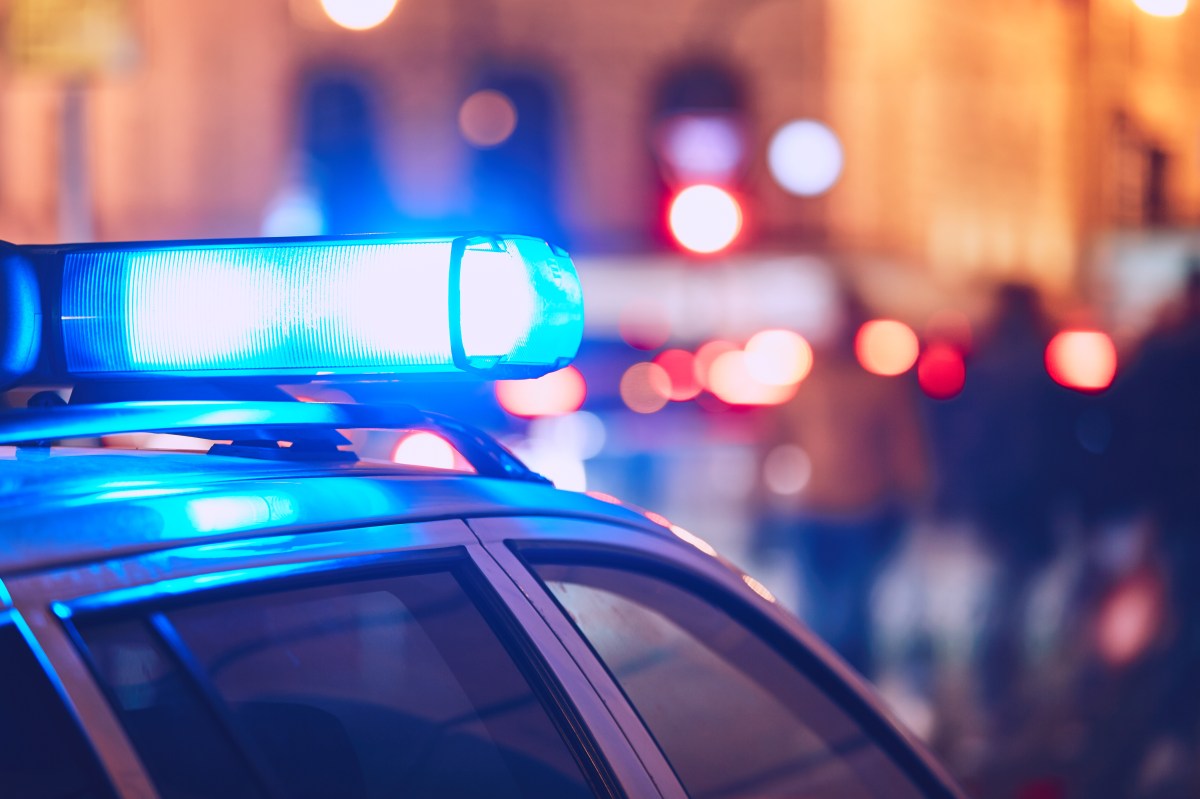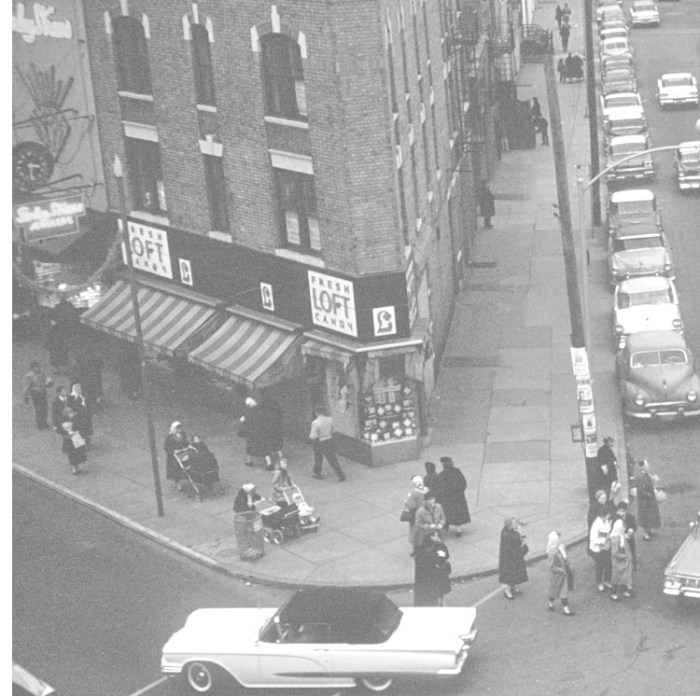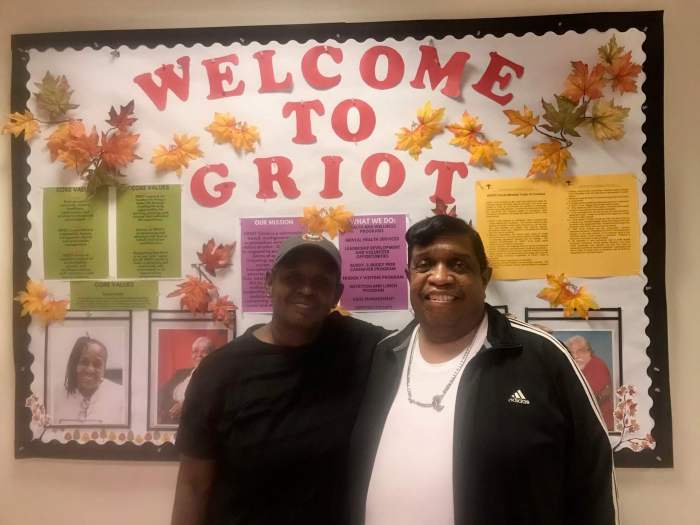BY LINCOLN ANDERSON | “Have you been down there? Have you seen what they’ve done?”
I was speaking on the phone with Charles Wolf. It was 10 days before the 15th anniversary of the Sept. 11 attack. As it would turn out, it was also 16 days before last weekend’s bomb blast in Chelsea. (Everything is bookended, it seems, by terrorism these days… .)
No, I admitted to him, I hadn’t really visited the new World Trade Center and the National 9/11 Memorial and Museum. I had covered the disaster — I saw one of the mighty towers fall, breathed in the toxic fallout — but haven’t closely covered all the rebuilding and rebirth as the area has risen from the ashes.
“You should come down, I’ll give you the tour,” he said.
I accepted his offer. After all, I was overdue. We planned to meet the next day. …
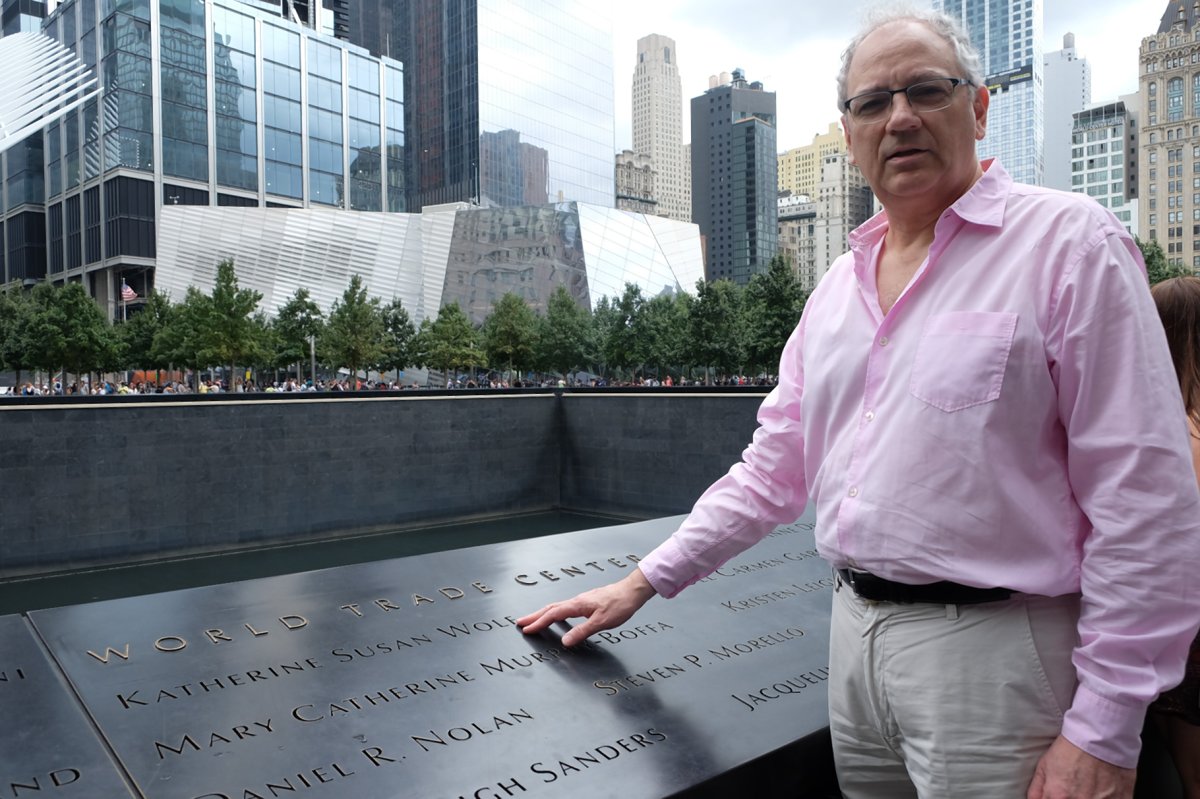
Charlie has a special and enduring attachment to this part of Lower Manhattan. That’s because he lost his wife, Katherine Susan Wolf, here on 9/11.
I asked him how he was doing emotionally as the anniversary approached. Just the fact that it has now been 15 years, in itself, is amazing.
‘The older you get, the faster time goes,” he reflected.
Katherine was working on the 97th floor of World Trade Center Tower 1 that morning.
The first hijacked jumbo jet hit Tower 1 at 8:46 a.m. Alhough she had a 9 o’clock starting time, she had been going in early, at 8:30 a.m., having just begun a new job as executive assistant to the president of Marsh & McClennan’s e-commerce division.
The 767 came hurtling in at 400 miles per hour, banking left. When the plane hit the building, its impact zone stretched from the 93rd to 99th floor. Wolf, who is a pilot, figures the terrorist at the controls tilted the wings this way on purpose, so as to spread the damage as widely as possible.
“Her desk was four desks from the window,” Wolf recalled of Katherine. “She was vaporized instantaneously…which is a blessing.”
Everyone present in the company’s offices that day perished, nearly 360 people.
Katherine was 40. They had married 12 years earlier, on Sept. 1 — which, coincidentally, was the day I first called Charlie for this column.
“Actually, we got married today – in Swansea, Wales,” he said. “Today would have been our 27th anniversary.”
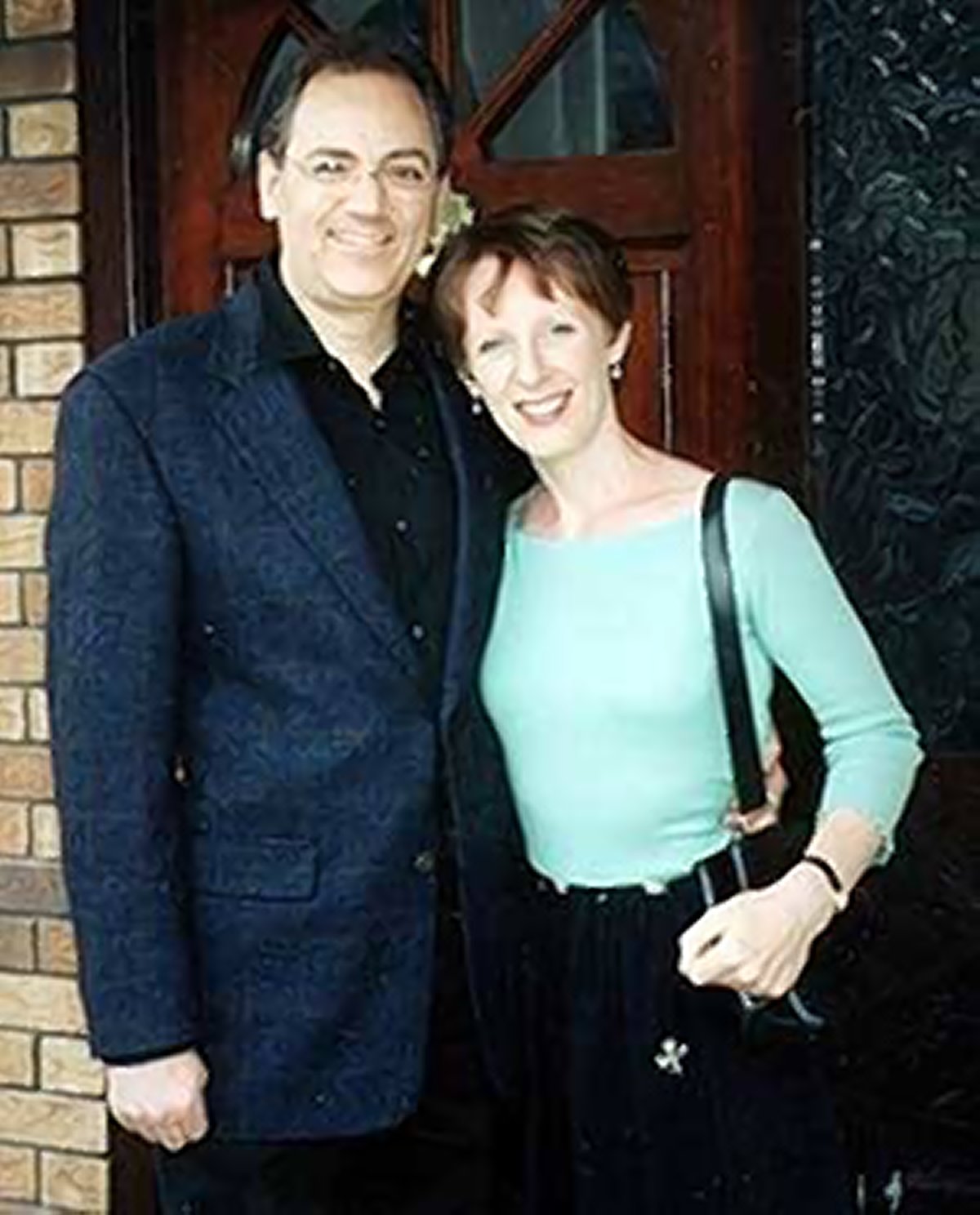
Wolf, 62, an Amway salesman, has lived on Bleecker St. since the 1970s. A Buffalo native, he took a job with Kodak in New York City because his girlfriend from college lived here. She eventually dumped him for her tennis coach.
He would later meet Katherine at St. Joseph’s Church on Sixth Ave. Wolf was a member of the Village Light Opera Group, which performed there, and she was in town with an English troupe that was doing a production at the Village church.
On 9/11, Wolf instinctively knew something was wrong when he heard the first jet flying low over his apartment. He had learned how to fly when he was 20, so he could tell. He went out on his balcony for a better listen.
“It was a twin-engine jet, with the throttles at maximum — like at takeoff,” he recalled thinking. “I could tell it was only 1,000 feet off the ground. I stepped back into my apartment, and that was when I heard the kaboom.”
In his pajamas and bare feet, he ran out onto Thompson St., and someone told him the World Trade Center had been hit.
“I called up the F.B.I.,” Wolf said, “because I knew 911 would be busy. I said, ‘That was a twin-engine — that was deliberate. …’ ”
That phone call was the start of Wolf’s involvement with 9/11 — from dealing with the devastating grief of Katherine’s loss, to joining other family members in advocacy work, ranging from fighting for compensation to the National 9/11 Memorial and Museum to, most recently, rallying behind a bill to allow family members to sue Saudi Arabia, the country from which 15 of the 19 hijackers hailed.
After the W.T.C. fell, Wolf, unlike many others, didn’t tape up missing posters for Katherine.
“I didn’t understand why people were putting them up,” he said, “because I knew where the plane had hit, and I knew she was gone.”
Back on the bike…
I covered the 9/11 attack as a reporter for The Villager.
I remember biking down past St. Vincent’s, where hospital staff were standing on Seventh Ave. in their green scrubs. I paused there with them, and we watched the Twin Towers, sporting gaping holes, as the huge buildings smoked and burned.
I remember watching from the Battery Park City ball fields, as a long sliver of a corner of Tower 2 suddenly just fell away into the sky, as if in slow motion. My view was blocked by Tower 1, so I didn’t immediately realize the first building had collapsed. But soon, an enormous, ugly, roiling green-yellow-brown-and-gray ball of smoke rose over the ball fields’ southern end. It just kept growing and growing in size, rolling toward us.
I remember biking down South St. with a flimsy spray mask on my face — it didn’t even seal around the edges — that I’d gotten at a triage post set up in Tribeca outside the then-Travelers Building. As I pedaled past the old Fulton Fish Market, the air was full of “brown rain.” It was W.T.C. fallout — little fluttering particles of cement, asbestos, glass, yes, probably human bodies, too, and who knows what else? The tan flakes stung my lungs and eyes, but soon my nerve endings just went numb, and I didn’t feel any burning anymore. I pedaled on through the dust-covered streets, trying to edge closer to the W.T.C. … Eventually, though, police corralled me onto a tugboat that evacuated me and a few others to Jersey City. …
The Pit and Point Hero
One night, a few days later, following behind a hard hat and a guy wearing a Department of Corrections jacket, I snuck into Ground Zero. I watched the surreal scene as police officers and others manned a bucket brigade, hoping to dig survivors out of the rubble of The Pit. A doctor there, cynically — though, I suppose, realistically — told me there would be no survivors, but the bucket brigade gave people hope. …
I remember the rescue workers — soon redubbed recovery workers — coming up the West Side Highway in buses at night, past “Point Hero,” outside our office, which was then at Canal St. As I typed up articles about the disaster, people would be out there, cheering the heroes on. I could see their candles flickering yellow in the darkness. … And there was the toxic smell of the burning rubble. And the incredible thin plume of black smoke that hovered over Ground Zero — for was it as long as two weeks?
I recall the shiver of fear I felt for the first couple of days afterward entering Grand Central Station — which I figured was a target, too — to catch the train to work Downtown. But that faded… .
W.T.C. phoenix dove
As for why I hadn’t really been back to the World Trade Center, well, for starters, The Villager doesn’t generally cover that far down into Lower Manhattan. We have a sister paper, Downtown Express, that has covered all the rebuilding in painstaking detail. And, like many New Yorkers, I don’t like to wallow in things — I try to move on. The memories of 9/11 are heavy. That said, again, I gladly accepted Charlie’s invitation to take “the tour.”
After meeting at the impressive new Fulton St. transportation hub, we started with the Oculus, another, far, far grander new transportation hub, designed by Santiago Calatrava. It’s definitely…different. It’s supposed to resemble a dove’s wings. But actually it reminded me of “Prometheus,” the latest “Aliens” movie. Its colossal soaring white ribs made me think of the big, bone-white humanoids from the Ridley Scott sci-fi flick, who, I imagined, would look right at home here.
Steve Cuozzo, writing in the New York Post, said the Oculus and, in fact, much of what has been built down at the former Ground Zero, essentially amounts to a pricey mall. And it’s true — the Oculus is lined with high-end shops. But it’s clearly popular with people — especially tourists, from the looks of it. It’s an impressive structure, and seemingly tailor-made for our new selfie-centric world. Everyone snaps photos of themselves there.
Wolf, who loves the Oculus, said, “It’s totally gorgeous.” In fact, he’s a big booster of the entire new W.T.C. site. “They took lemons and made lemonade,” he said.
I really liked W.T.C. Tower 4, designed by architect Fumihiko Maki, whose special glass “disappears” into the sky and reflects the passing clouds.
There of course is Tower 1, which had been dubbed “The Freedom Tower,” though is no longer called that. I asked Wolf if he likes the tutti-frutti pole atop it, whose colors can be changed — like the top of the Empire State Building — to commemorate a special day or event. He doesn’t think it’s cheesy, though, noting, “We have another icon we can use.”
Fight for families’ rights
Wolf formerly was heavily involved in fighting for the rights of victims’ family members. In 2002, he set up a Web site, FixTheFund.org, which pushed to extend the timeframe that people had to seek medical treatment after the attack and still qualify for compensation; in the end, the period was lengthened from 24 hours to 96 hours.
Family members “were being portrayed as greedy,” Wolf recalled. “People were seeing the Victims Compensation Fund as charity — not rightfully deserved.”
He also advocated for restarting the search for victims’ remains after a Con Ed vacuum truck sucked a skeleton out of a manhole near the W.T.C. Wolf met with Bloomberg administration officials, who assured him the search would recommence.
“I just knew, if there was one body, there would be more,” he said. Wolf urged the city to “look under the streets,” since the destroyed area had been repaved to allow construction vehicles better access. In the end, the Bloomberg administration spent $60 million on additional searching.
Wolf and other family members also protested outside a White House Holiday Dinner to demand that a bill to appoint a national intelligence director be passed.
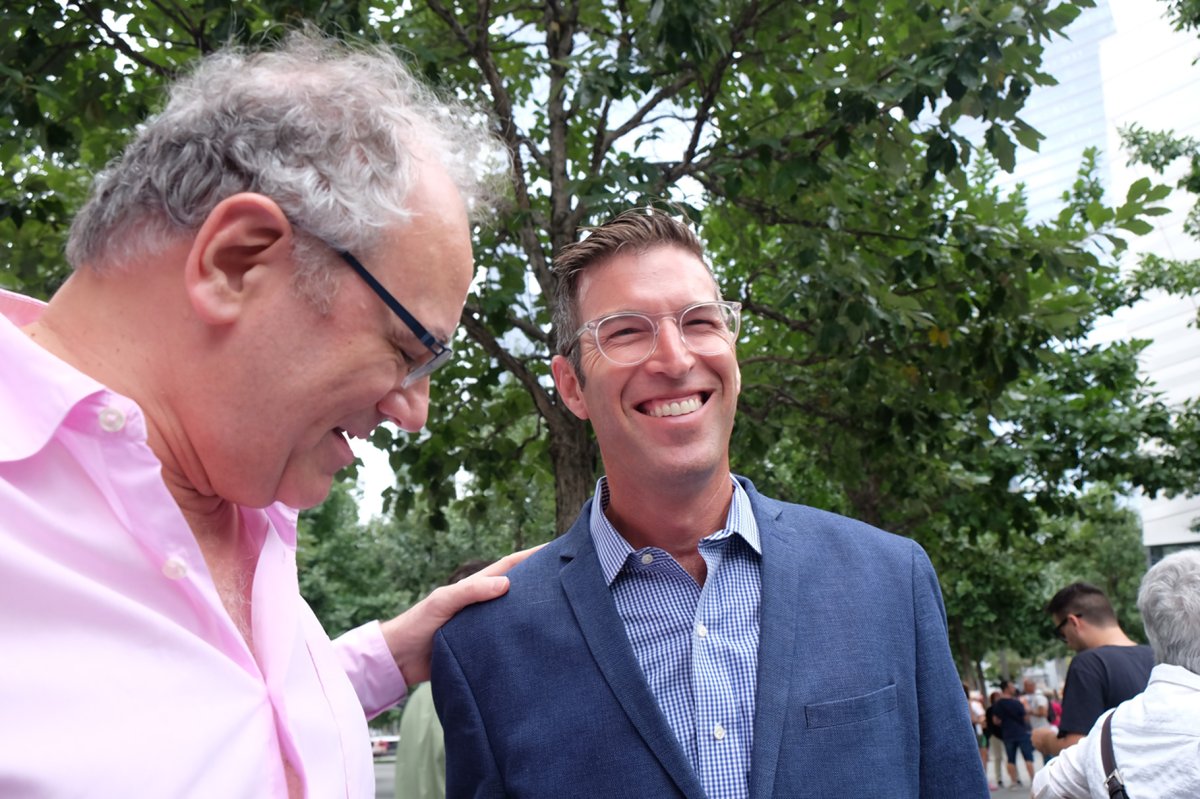
The director was needed, Wolf said, since, “If the F.B.I. and C.I.A. had been talking to one another [before 9/11], they would have been able to find out was going on.”
More recently, last year, Wolf testified before the Lower Manhattan Development Corporation, advocating for funding to keep the annual Tribute in Light display proudly beaming up to the heavens during the anniversary.
‘Reflecting Absence’
Wolf led me through the small new Liberty Park, at the south end of the site. The battered sculpture “The Sphere,” by Fritz Koenig, which once anchored the W.T.C. plaza, will be brought back here.
“It does not belong on the memorial plaza,” he said of the iconic artwork.
Next, it was on to the memorial plaza, “Reflecting Absence,” with its two waterfalls on the exact footprints of the Twin Towers. Wolf, who is an excellent docent of the entire site, explained that the white swamp oaks that dot the memorial, once grown, “will form a cathedral-like canopy” overhead.
Around the memorial ringing the Tower 2 waterfall are the names of all the first responders — including the staggering 343 firefighters — who died on 9/11, covering nearly two full sides of the square. Also around this pool are the victims of Flight 93, who managed to down their plane in Shanksville, Pa., before it could crash into its intended target, possibly the White House, Wolf said.
‘Let’s roll!’
I looked for Mark Bingham’s name, and eventually found it. A burly gay rugby player, he was one of the group of passengers who — with a cry of “Let’s roll!” — stormed Flight 93’s cockpit, forcing the terrorists to crash the plane before it could strike the capitol. I remembered interviewing Bingham’s mother, Alice Hoagland, a former flight attendant, on the phone about his heroism, and interviewing his roommate in Chelsea.
“These are the largest manmade waterfalls in the world,” Wolf said, as we made our way around the twin squares.
A woman placing flowers at the memorial asked Wolf to shoot her photo. Her brother-in-law, Gerard Baptiste, was one of 10 firefighters from Engine 33, on Great Jones St. in Noho, who died responding to the disaster.
“I lost my wife,” Wolf said, smiling gently, before snapping her picture.
The names around the Tower 1 waterfall memorial are packed together more densely, Wolf explained, since there were more fatalities in that building.
“No one got out above the 91st floor,” he said.
Charlie showed me Katherine’s name.
“That’s my wife. … I always give her a kiss,” he said, bending over and touching his lips to her name etched in the bronze.
As for why hers is the first name listed among the victims of Tower 1 — the memorial’s names are not listed alphabetically — it would seem to be an acknowledgment of Wolf’s leading role as a family member. However, he said it wasn’t his doing.
“They said, ‘Where do you want her?’ ” he recalled. “I said, ‘Wherever you want.’ ”
Press and politicians
I looked for the name of someone I knew, Doug Gardner. I knew him as a great hoops player and genuinely nice guy in the annual Fire Island Basketball Tournament, which I had started playing in when I worked on the Fire Island News as a young reporter. I actually didn’t know until 9/11 that Doug had been a top executive at Cantor Fitzgerald. I found his name, Douglas Benjamin Gardner, on the southeast corner of the Tower 1 memorial, grouped with the other Cantor execs. On this 9/11, a veteran ball player from the tournament wrote his memories of Doug and sent them out on the group e-mail list. I attached a photo I took of Doug’s name on the memorial, then hit “reply all.”
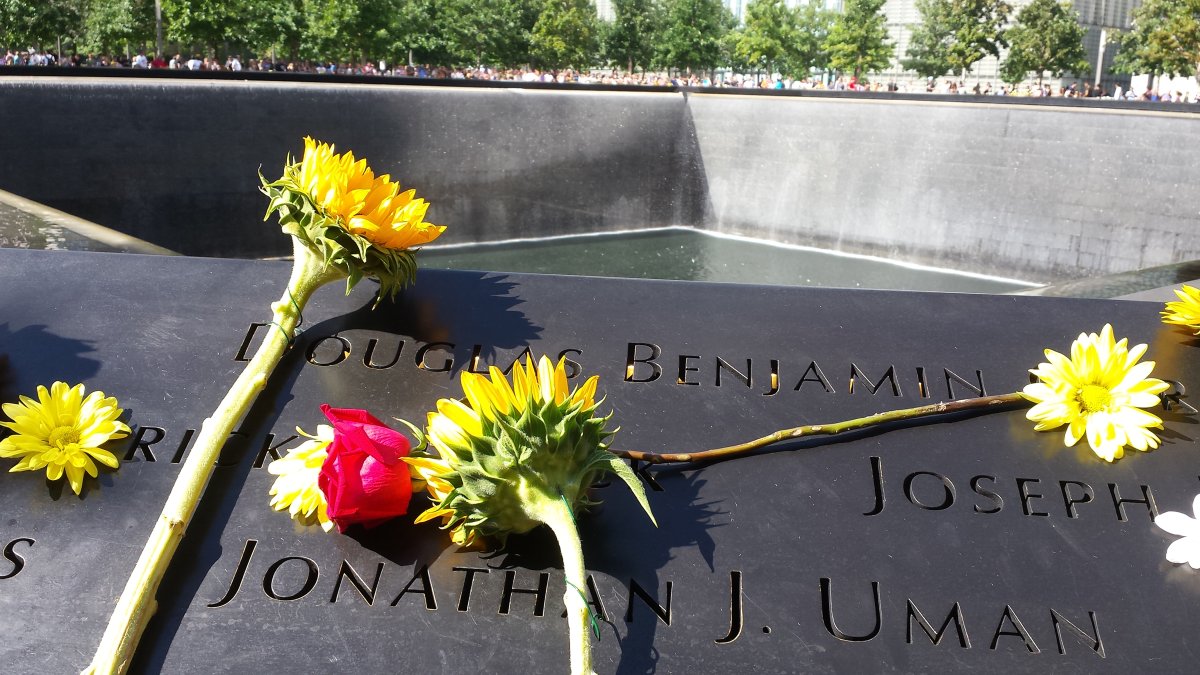
On the corner diagonally across the Tower 1 pool from there is the name of Berry Berenson Perkins, the wife of Anthony Perkins, of “Psycho” fame. After 9/11, the late Jerry Tallmer wrote a column for The Villager about how he had interviewed her, and how enraged he was at the terrorists who had killed her. The memorial’s corners seemed to be powerful spots.
Go-to media guy
Affable, upbeat and articulate, Wolf has been one of the go-to 9/11 family members for the media.
“I’ve been on every television station in the city,” he told me. “I’ve been in every newspaper up and down the East Coast. … The week that bin Laden was killed, I did 46 press interviews.”
He’s also met all the politicians on their visits to the W.T.C. site over the years. After the memorial’s dedication in September 2011, he was particularly moved when former Governor George Pataki extended himself to him.
“Pataki put his arm around my shoulder and said, ‘C’mon, Charles, let’s go look at Katherine’s name.’ He’s a great guy.”
President Obama met with family members in May 2014 when the 9/11 museum was dedicated. Three years earlier, Obama had come to Lower Manhattan to meet with Wolf and other family members after Osama bin Laden was killed. I had to press Wolf, who is a registered Republican, to get his thoughts on Obama.
“His words to the group were very sober, not for media consumption,” he said, adding, “Yeah, he got it right.”
Chuck was the man
But he does like one Democrat immensely, Chuck Schumer.
“If we needed help, Senator Schumer was always right there,” he said.
Hillary Clinton, as a senator, on the other hand, he felt was always slower to respond.
“Hillary would wait two weeks — maybe testing the waters, checking the political winds,” he said. “We don’t know. That’s her style.”
At the same time, he acknowledged, “Hillary, when you talk to her one-on-one, she is focused on you.”
Wolf fondly recalled one time when 9/11 family members were holding a news conference on the Upper East Side, but ABC News couldn’t get its van there on time. Schumer told Wolf to hop into his car with him and they would drive over to ABC’s studios on the West Side and film a segment there.
“We were going through Central Park and Schumer told his driver, ‘Put your red light on.’ He put the red light on his dashboard,” Wolf recalled.
Into the museum
I had already spent a few hours touring the W.T.C. site with Wolf, but he persuaded me to pop into the 9/11 museum “for just 15 minutes.” Fifteen minutes turned into three hours — and could have easily been more, if we didn’t have to leave at closing time.
There’s so much to see and absorb, from an exposed portion of the massive W.T.C. slurry wall — which keeps the Hudson River from flooding the landfilled site — to a section of the W.T.C. antenna — up close, it’s thicker than I would have imagined.
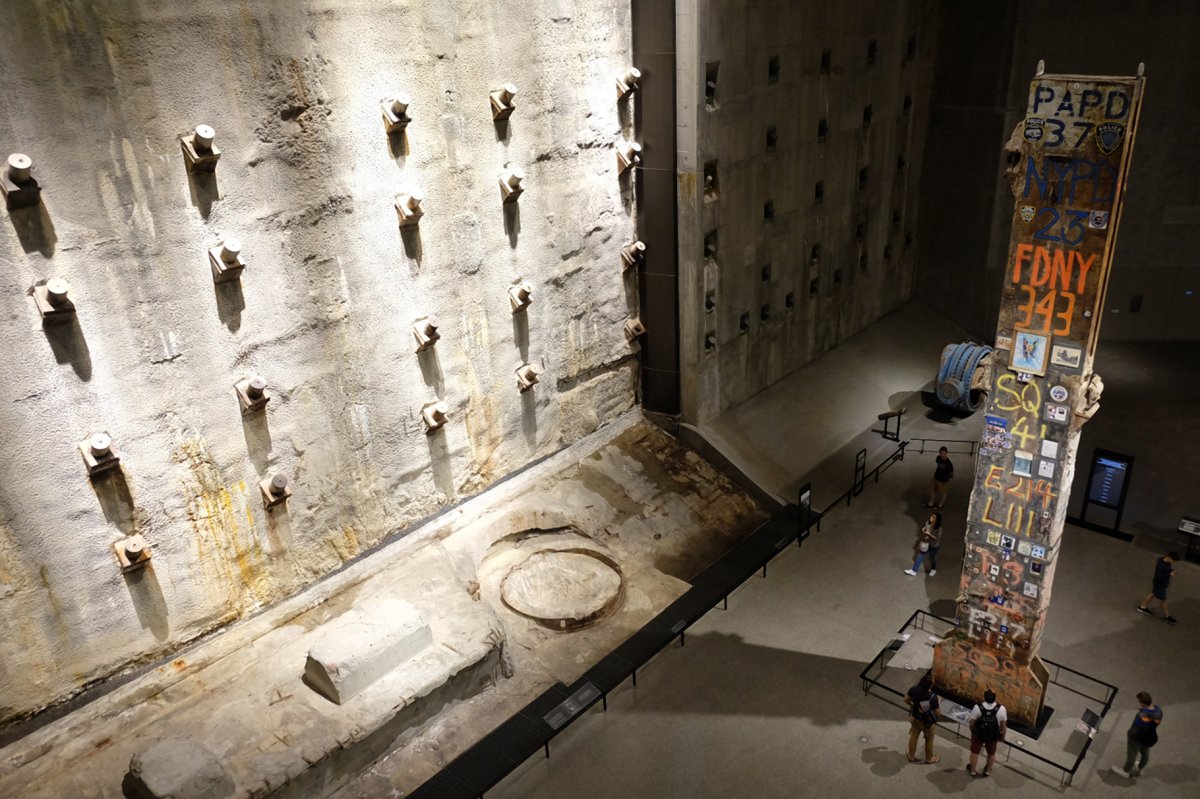
There is the destroyed Ladder 3 fire truck from the firehouse at 108 E. 13th St., which lost 12 men on Sept. 11, 2001. The rig’s ladder, melted in the inferno, lies drooped over the front cab in a sideways “S,” like a squiggle of wet spaghetti.
At one point, Wolf was gazing at a photo of a man who jumped from one of the top floors of one of the towers.
“These people did not commit suicide,” he stressed. “They had no choice. They weren’t going to survive — just [wanted to] go faster, less painfully. I just thank God that my wife didn’t have to make that choice,” he said, again stating his belief that his wife was killed instantly.
‘Hugs are wonderful’
A tourist from Florida overhead Wolf and spontaneously embraced him, breaking out in tears.
“I’m sorry, I’m so sorry,” she said, as she hugged him.
Wolf told the couple to go by Katherine’s name on the memorial and “give her a kiss.”
“It felt good. Hugs are wonderful,” he said afterward. A reiki patient and practitioner, he firmly believes in the healing power of touch.
Another photo showed a woman holding down her skirt as she leaped off Tower 1 somewhere around the 100th floor.
“That’s what Katherine would have done,” he noted.
Yet, it wasn’t her, rather a woman from Cantor Fitzgerald, he had been told. Plus, Katherine was wearing different clothes, a business suit, he said. Somehow, though, he had felt compelled to ask.
One alcove in the museum has audio recordings from the doomed Flight 93. I was amazed at the bravery, especially of several women passengers, who left final messages for their loved ones. Their voices were mostly calm and unwavering, even as they knew they probably wouldn’t survive.
Emotional sucker punch
Wolf suddenly teared up after watching a screen showing a loop of the Budweiser 9/11 Super Bowl XXXVI ad. Only aired once, the team of Clydesdales trot to within view of the empty W.T.C. site, then kneel in silent respect.
“Sometimes you get sucker-punched,” he said. “I mean, I love animals. …”
Understanding so intimately the feelings that can overwhelm a person in this sort of space, Wolf said it was his idea to advocate for a way to duck out quickly, if needed. His suggestion was accepted.
“Along the way, there are places to exit early, if it’s too much for you,” he explained. “They call them ‘emotional escape routes.’ ”
Down to bedrock
Finally, we arrived at the room where all the victims’ photos are displayed, entirely covering the walls from floor to ceiling. Looking at the sheer number of faces, the magnitude of the loss sunk in for me once again.
“This is what makes it a memorial,” he said.
The photo of Katherine is there, “a Welsh redhead,” Wolf said fondly. He tapped her image on a touchscreen. We then entered another room. Inside, a glass floor floats over bedrock — the very bottom of the former W.T.C. site. Photos of Katherine alone and with Charlie projected onto a wall with a brief text. In turn, I called up my friend Doug on the touchscreen, and was glad to see that his brief bio includes that he was a basketball player.
As the museum was closing, we exited up the long ramp to the recorded music of bagpipes, which seemed fitting. Wolf paused to chat with security guard Bridget Mills.
“God bless you, that you came here. A lot of New Yorkers don’t even come to the plaza,” she said, referring to the outdoor memorial, which is free. “I’m spiritual, and I feel a spirituality here,” she added.
One other thing about the museum, Wolf had explained to me earlier: After some debate, the decision ultimately was made to include photos of the 19 terrorist hijackers. But their images are shown very small — about the size of baseball cards — and they are positioned at knee level. The viewer is “looking down on them,” Wolf noted.
Yet, after watching a video showing police selflessly helping people flee from the burning Towers, Wolf stressed the need to stop stereotyping — of any sort. Period.
“It’s just too bad that the bad apples are getting all the attention,” he said. “People have to stop painting all cops as bad, painting all Muslims as bad.”
‘This time was tough’
On Sept. 11, I caught up with Wolf on his cell phone after he had returned from a Cantor Fitzgerald memorial event he had been invited to this year for the first time. He was back up on Bleecker St., downing some spicy dumplings and sesame noodles at Uncle Ted’s.
Asked how this 15th anniversary of 9/11 had compared to others, Wolf said, though it’s gotten less painful as the years go by, this one “was very rough. I was getting angry and I cried,” he said. “Honestly, it’s probably good, the emotion is coming out.
“The last time I really had a tough year was 2009,” he reflected. “Most of the time when the bells ring, I’m O.K., but this time it ripped right through me.”
At the memorial, a bell is solemnly rung twice, marking the time each jet hit the towers.
He said he had gotten “some wonderful hugs” from people at the ceremony, including, again, Pataki (who may well have a future in reiki).
Wolf, who is Episcopalian, also gave two scriptural readings — one from Jeremiah, another from Timothy — at the Cathedral of St. John the Divine on the anniversary.
As for trying to move on, Wolf said his father, who lost his own wife, Wolf’s stepmother, confided to him, “It never goes away.”
Wolf said he did date someone starting in 2003 for a few years, but she broke up with him. Part of the reason they split, he feels, was because he came down with 9/11-related symptoms from the toxic air that wafted over the Village after the attack.
“That stuff stayed in my body — I guess, because of my emotional state,” he said. “I couldn’t climb up stairs. At one point I could barely walk a block.”
Using alternative therapies, like acupuncture and homeopathy, though, Wolf began to feel better.
“I’m trying to get back in the dating world,” he said. “It’s not easy. You gotta start from scratch.”
Chelsea — ‘so minor’
Less than a week after this year’s 9/11 anniversary, New York was rocked by another terrorist attack, when a bomb blew up on W. 23rd St. in Chelsea this past Saturday night, injuring 29 people. Luckily, no one was killed or seriously injured.
Sunday night, I asked Wolf, as a 9/11 family member, for his reaction.
“Anytime this kind of stuff happens, you get a little bit of ‘Oh, gosh’ — thankful you’re not there, thankful you didn’t get hurt,” he said.
However, he added, “This is so minor compared to what happened [on 9/11]. But there are still people out there that want to kill us.
“After what I’ve been through — you were there, you saw it,” he told me, “this is nothing compared to that. I’ve been through the mill. I’m still here.”
I had been expecting a different response from him, but I think I understood where he was coming from. Going on the tour of the W.T.C. site with Wolf brought me back to those wrenching days of 9/11, to a disaster on an epic, world-changing scale, the likes of which we had never seen.
I asked Wolf again on Monday night for his thoughts, after the alleged Chelsea bomber had now been arrested and linked to another blast. But his view had not changed.
“It’s terrorism, but nothing compared to 9/11,” he said. “No deaths, 29 injuries, with the injured out of the hospital the same night, and a small amount of property damage.
“This is small potatoes,” he said. “The media wants to gin it up.”
Asked if anyone from the media had called him for comment about it, he said, “You did!”








